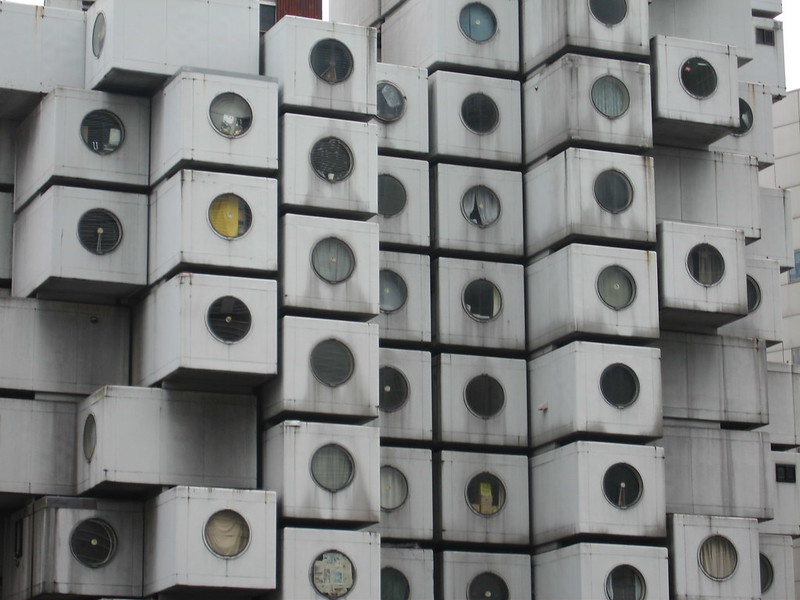Nakagin Capsule Hotel – How one of Tokyo’s most iconic structures got a new life
The Nakagin capsule hotel was one of Tokyo’s most iconic structures. Located in Ginza with the intention of housing travelling salarymen in removable and replaceable capsules, the asymmetric structure gained international admiration.
The architect, Kisho Kurokawa, was a leader in the Metabolist movement of the 1960s and 1970s and designed the building to embody the movement’s principles of adapting to change over time. However, a flaw in the design made it impossible to replace the capsules, preventing the hotel from realizing its full potential.
The intention was to swap the capsules every 25 years, but nearly 50 years later, the building had fallen into disrepair. The city’s stringent earthquake regulations, high levels of asbestos, and disagreements among the owners ultimately sealed the tower’s fate. Despite this, 23 capsules were saved and are being restored to preserve the building’s legacy.
The 14-story building contained 140 individual capsules attached to two interconnected concrete towers. The prefabricated steel capsules were bolted onto this central structure, stacked and rotated at various angles forming an asymmetric building. The interior is 10-sq metres and complete with a unit bathroom, a Sony Trinitron TV, a reel-to-reel tape player and a rotary dial phone. The circular window creates the iconic washing machine façade of the building.
The tower was a demonstration of metabolism, an Avant-Garde architectural movement originating in Japan, and a reflection of the radical changes experienced during its post-war economic and cultural revolution.
The Metabolist philosophy viewed buildings as organisms that could be adapted or altered over time. The core principles, described in the 1960 “Proposal for a New Urbanism,” state “We regard human society as a vital process, a continuous development from atom to nebula. The reason why we use the biological word metabolism is that we believe design and technology should denote human vitality.”
The Metabolist movement embodies principles of sustainability and recyclability, as it is easy to replace and exchange each component without affecting the building’s core structure. This movement is a precursor to today’s modular designs, which are becoming increasingly popular due to their environmental benefits.
Members of the non-profit Nakagin Capsule Tower Preservation and Regeneration project saved 23 of the pods currently stored outside Tokyo in the prefecture of Chiba.
Of the 23 pods, fourteen will be restored to their original glory, whilst the remaining nine will be stripped down to their basic structure, providing a blank slate for prospective owners.
Inquiries for the restored capsules have come from across the world, with plans to display them in hotels, company lobbies, museums and other locations.



